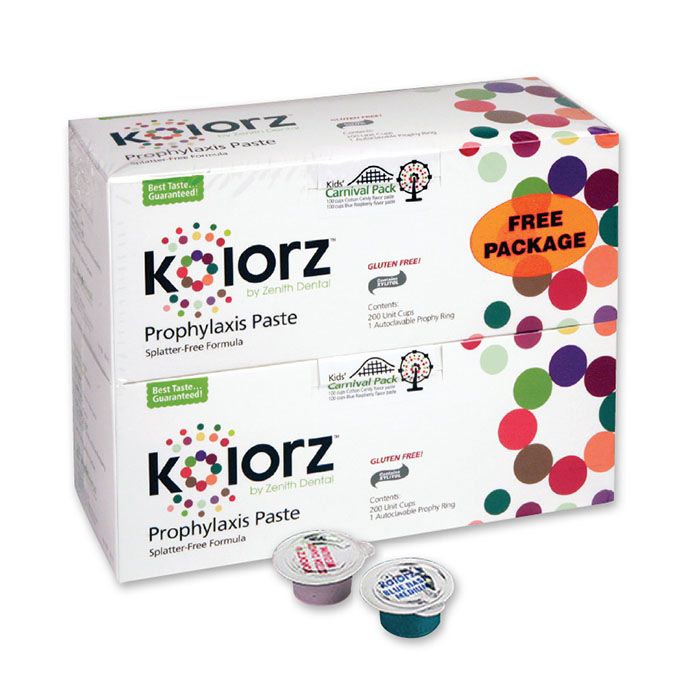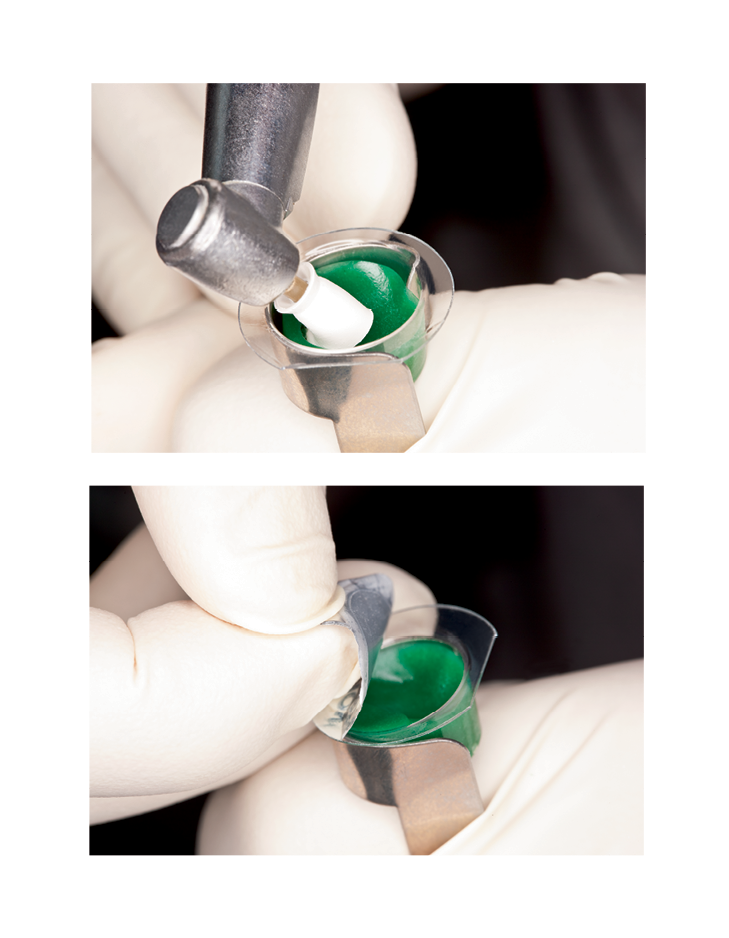By Shannon Pace-Brinker, CDA, CDD
It is estimated that dental hygienists perform approximately 200 million prophylaxis procedures annually. Many states have changed their practice act, allowing the expanded function dental assistant to perform some of these procedures, such as coronal polishing. These assistants are working alongside the hygienist as hygiene treatment coordinators, helping to make this department even more functional and productive. In fact, in the majority of dental offices it is the dental assistant who is in charge of ordering supplies, often choosing which products the hygiene department will use.
This article will help offer assistance to the dental assistant in understanding the etiology for coronal polishing, its protocols and techniques along with product selections, including what to use and how to use it as well as what not to use and why. Understanding these factors will help the dental assistant better meet both the doctors’ and patients’ expectations.
From the patient’s perspective, it is important that we comprehend the four distinct objectives that must be met for patient satisfaction. First is the cosmetic aspect of ‘their cleaning’, stain removal. This is often the most significant element to patients simply because they like the look and feel of polished teeth. Yet equally as important to patients is the taste and smell sensations that are perceived by the taste buds’ receptors. The next issue would be to understand what is in the compound that can be considered both good and bad to special needs patients such as aspartame, saccharin or gluten sensitivity. And lastly would be the blend and texture technology of the formula where the focus is on splatter-free thus helping to eliminate prophy paste in the hair, on the glasses, etc.
These advanced technologies along with innovative manufacturers have given us amazing products to work with that help us give patients the stunning smiles that they want and the end result we seek patients whose expectations have been exceeded.
Choose to Use? 
When choosing a prophy paste, flavor and aroma preference are as important as the grit selection. Days of tasteless pastes have been replaced with products that have superior taste and smell.
When asking a patient for flavor preference, hygienists know that most adults choose mint. This flavor reminds them of their familiar flavored toothpaste, or cherry. Then there are flavors that are targeted primarily to children, like cotton candy and blue raspberry.
KOLORZ® by DMG was co-developed by gourmet food experts. Special attention has been given to taste and smell, therefore satisfying two of the patient pleasing factors. What also affects taste is the sweetener selection. KOLORZ contains no controversial sweeteners like Aspartame and Saccharin. Instead, it contains Sucralose, commonly found in Splenda® and Xylitol, a natural sweetener found in fruits and berries and that has demonstrated a dramatic reduction in dental caries.
Another key factor in prophy paste development is “specialty products” formulated for particular needs patients. For example, some patients are sensitive to wheat and its bi-products. They suffer from a condition called Celiac Disease so selecting products that are gluten free eliminates the chance of an allergic reaction. Unfortunately, gluten is found in many coloring and flavoring additives used in dentistry so pay special attention to the package to see if it clearly states ‘gluten free’. Whenever there is a medical concern try products that are made specifically without flavoring, coloring, fluoride or oils.
The Impact of Polishing
There are those that may view coronal polishing as a simple procedure with limited risk factors, but coronal polishing has the potential to abrade tooth structure as well as alter the surface characterization of esthetic restorations. Improper polishing techniques or using an inappropriate cleaning or polishing compound can cause patient discomfort and create needless trauma to the soft tissue and pulp.
Cleaning and polishing agents: understanding the difference?
There are differences in polishing pastes besides the obvious, like grit size of fine, medium, coarse, and extra coarse. Some just clean or just polish and many do both. The majority of prophy pastes are pumice-based with particles that reduce in size when they are used during the polishing procedures. The KOLORZ line of prophy pastes provides a variety of 4 grits and 6 great-tasting flavors, including Mint.
Cleaning agents do not contain abrasive particles, destroy tooth structure or damage aesthetic restorations. However the majority of polishing pastes do contain abrasive particles that are commonly harder than the surface intended to be polished. Coarse paste removes stains, but leaves a rougher tooth surface, which will stain faster. However, medium grit prophy paste removes stain effectively and quickly with less abrasion to enamel or dentin. The finer the abrasive material, the finer the scratches, thus the smoother and shinier the surface will be.
Manufacturers have produced specially formulated polishing compounds that protect the integrity of composite and ceramic restorations as well as improve the luster. Typically, composites should be polished with aluminum oxide polishing pastes while porcelain should be polished with diamond paste. These specialty-polishing agents are designed to replenish and seal composite materials while restoring the luster, but are not designed to remove stains.
Identifying Stain
The use of traditional prophylaxis paste is the most common material for stain removal. However, for patients with coronal staining it becomes important to identify the type of stain present to determine the products that you will be using.
Extrinsic stains vary in origin and color and so does the protocols for removal. The most common external stains, yellow or orange results from poor oral hygiene and can be easily removed with light polishing. Another common stain often seen in children with very poor oral hygiene is green staining, which indicates demineralized of enamel. In these situations, it is important to prevent any further loss of tooth structure so coronal polishing is contraindicated. Of noteworthy is the impact of prophy pastes on demineralization: not only will prophy paste remove the majority of the fluoride ion remaining on the surface, it may also render the enamel so damaged that it can be rather difficult to remineralize.
Brown stains are caused from drinking pigmented beverages and foods, tobacco use or chlorhexidine and are more of a challenge to remove. However black-line stain is calculus-like and forms along the gingival third of the tooth near the gingival margin. Black line stain is firmly attached to the teeth and often requires moderate instrumentation to be removed. While removing stain with a prophy cup and paste, it is imperative to decrease the pressure applied to the tooth surface. As we know root surface is much softer than enamel, and more tooth structure is lost when polishing exposed root as compared to enamel.
According to dental distributors the majority all prophy paste sold in this country are coarse or extra-coarse; fine prophy pastes only account for a small percentage of all sales. It is true that coarse pastes do remove stain faster, but there is a price, especially to the root structure. Remember that more patients are being scheduled on a more frequent basis for periodontal maintenance, doubling the risk of potential damage. For safe, effective polishing, it is important to remember that once polishing has been completed, a topical fluoride is recommended to replace what was removed during the polishing procedure. The much needed fluoride therapy helps to reduce the solubility of the enamel surface by replacing the apatite with fluorapatite thus reducing further breakdown.
